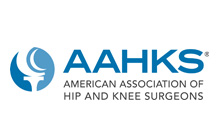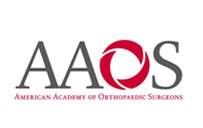Long-term, clinical outcome of arthroscopic rotator cuff repair may be improved with concomitant acromioplasty in patients with a Type III acromion
In theory, extrinsic anterolateral acromial impingement of the rotator cuff can contribute to cuff tearing. Thus, acromioplasty may be performed concomitantly with arthroscopic rotator cuff repair (ARCR). A review of recent randomized controlled trials confirms that patient long-term outcomes after ARCR is superior when acromioplasty is performed, when compared to no concomitant acromioplasty, while complication and retear rates are similar.
How to Wear a Shoulder Sling
A shoulder sling keeps your arm against your body and prevents you from moving it too much. However, if you wear a shoulder sling the wrong way, you might slow healing or injure your arm more.
No More Knee Pain: The Best Running Shoes for Pain-Free Runs
There's nothing worse for a runner than feeling motivated to hit the roads, but not being able to because of an injury. "Runner's knee" is a general term that encompasses a few different conditions that can cause knee pain from running. Although running shoes won't cure knee pain on their own, choosing the right pair is a must if you hope to alleviate or avoid knee pain and keep logging those miles.
10 Strengthening Exercises for Hip Bursitis
Previously, researchers thought that hip bursitis was the primary cause of lateral or side hip pain. Now, experts know that greater trochanteric pain syndrome (GTPS) is a more accurate explanation. GTPS includes injury or wear and tear of the gluteal muscle tendons (tendinopathy), which may cause hip pain that worsens with movement.
Muscle tissue changes could be driving sex-based injury risk, say physiologists
Differences in the way muscles respond to stress could help explain why certain sports injuries are more common in women compared to men, and vice versa, new research suggests.
Augmented ACL reconstruction yielded faster functional recovery vs. no augmentation
ACL reconstruction with bone marrow aspirate, demineralized bone matrix and suture tape may improve functional outcomes.
Comparison of mid-term clinical and radiological results of short and conventional femoral stems in total hip arthroplasty
This study aims to answer the question: Which are superior—conventional or short femoral stems?. An Optymis stem was used as a short-femoral stem, and an Accolade II stem was used as a conventional-femoral stem.
Enhancing Healing of Massive Rotator Cuff Tears: A Radiographic Evaluation of Bridging Allograft vs. Maximal Repair - A Randomized Control Trial
The purpose of this study was to compare the radiographic results of bridging rotator cuff reconstruction (BRR) with dermal allograft and maximal repair for large or massive, irreparable rotator cuff tears.
When Not to Have Rotator Cuff Surgery
Rotator cuff tears may require surgery to repair, but they can often heal with rest, physical therapy, and medication when needed. Discuss with your orthopedist when to have or not have rotator cuff surgery.
Patient-Reported Outcome Measures Used on Patients With Anterior Cruciate Ligament Injury
Patient-reported knee-related rating scores and scales are widely used in reporting the clinical outcomes of anterior cruciate ligament (ACL) surgery. Understanding the psychometric properties of such measures is vital to recognizing the limitations that such measures may confer. The aim of this study was to review the available evidence as to the psychometric properties of patient-reported outcome measures (PROMs) used in ACL surgery.








